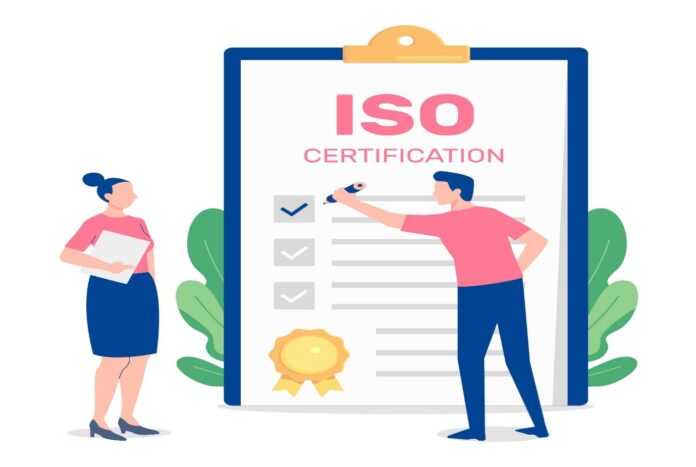Introduction
A. Brief explanation of ISO certification
ISO certification refers to a set of international standards developed by the International Organization for Standardization (ISO) that define criteria for quality management systems. These standards aim to ensure that businesses meet certain quality benchmarks in their products, services, and processes. Companies undergo a rigorous assessment process to obtain ISO certification, demonstrating their commitment to quality and continuous improvement.
B. Importance of quality assurance in business
Quality assurance plays a pivotal role in the success and sustainability of any business. By implementing robust quality assurance measures, organizations can consistently deliver products and services that meet or exceed customer expectations. This not only enhances customer satisfaction but also builds trust and credibility in the market. Additionally, effective quality assurance practices help businesses identify and rectify issues early in the production process, leading to cost savings, improved efficiency, and reduced waste. Ultimately, investing in quality assurance fosters long-term growth and competitiveness in today’s global marketplace.

Understanding ISO Certification
A. What is ISO?
ISO, or the International Organization for Standardization, is an independent, non-governmental international organization that develops and publishes standards to ensure quality, safety, and efficiency of products, services, and systems. It is headquartered in Geneva, Switzerland, and comprises national standards bodies from various countries.
B. Types of ISO Certifications
- ISO 9001: Quality Management System (QMS) – focuses on enhancing customer satisfaction through consistent product/service quality and continuous improvement.
- ISO 14001: Environmental Management System (EMS) – aims to reduce the environmental impact of an organization’s activities and operations.
- ISO 45001: Occupational Health and Safety Management System (OHSMS) – concentrates on ensuring a safe and healthy work environment for employees and stakeholders.
- ISO 27001: Information Security Management System (ISMS) – addresses information security risks and protects sensitive data.
- ISO 22000: Food Safety Management System (FSMS) – ensures the safety and quality of food products throughout the supply chain.
- ISO 50001: Energy Management System (EnMS) – focuses on optimizing energy efficiency and reducing energy consumption.
C. Benefits of ISO Certification
- Enhanced Credibility and Reputation: ISO certification demonstrates an organization’s commitment to quality, safety, and sustainability, enhancing its reputation and credibility among customers, stakeholders, and regulatory bodies.
- Improved Efficiency and Performance: Implementing ISO standards encourages systematic processes, leading to improved efficiency, reduced waste, and enhanced productivity.
- Expanded Market Access: ISO certification can facilitate entry into new markets, as it is often a requirement for participation in tenders or contracts, especially in industries like manufacturing and construction.
- Regulatory Compliance: ISO standards often align with regulatory requirements, helping organizations comply with legal obligations and avoid penalties or fines.
- Better Risk Management: ISO frameworks emphasize risk-based thinking, enabling organizations to identify, assess, and mitigate risks effectively, thus enhancing resilience and sustainability.
- Increased Customer Satisfaction: By ensuring consistent quality and reliability, ISO certification enhances customer satisfaction, leading to improved loyalty and repeat business.
The Promise of Quality
A. Ensuring Consistent Quality Standards
In today’s competitive market, ensuring consistent quality standards is paramount for businesses to thrive. By implementing rigorous quality control measures, companies can maintain the reliability and excellence of their products or services. This involves meticulous attention to detail at every stage of production or delivery, from sourcing raw materials to final inspection. Consistency in quality not only enhances customer satisfaction but also reinforces the reputation of the brand in the marketplace.
B. Meeting Customer Expectations
Understanding and meeting customer expectations is essential for business success. By actively listening to customer feedback and market trends, companies can tailor their offerings to match the evolving needs and desires of their target audience. This requires a customer-centric approach, where every aspect of the product or service is designed with the end-user in mind. By consistently exceeding customer expectations, businesses can foster loyalty and build long-lasting relationships with their clientele.
C. Building Trust and Credibility
Trust and credibility are the cornerstones of a successful business. Establishing a reputation for reliability and integrity is crucial for gaining the confidence of customers, partners, and stakeholders. This involves transparent communication, delivering on promises, and handling any issues or concerns with professionalism and accountability. By consistently upholding high ethical standards and delivering quality outcomes, businesses can earn the trust of their audience and differentiate themselves in a crowded marketplace.
Process of ISO Certification
A. Preparing for Certification
Preparing for ISO certification involves several key steps:
- Understanding ISO Standards: Familiarize yourself with the specific ISO standards relevant to your industry or organization. This involves understanding the requirements and guidelines set forth by ISO.
- Gap Analysis: Conduct a gap analysis to identify areas where your current processes and procedures deviate from ISO standards. This helps in creating a roadmap for implementation.
- Documentation: Develop or update documentation such as quality manuals, procedures, work instructions, and records to align with ISO requirements.
- Training and Awareness: Provide training to employees at all levels to ensure they understand the requirements of ISO standards and their roles in achieving compliance.
- Internal Audits: Conduct internal audits to assess the effectiveness of implemented processes and identify any non-conformities that need to be addressed.
- Management Review: Hold management reviews to evaluate the performance of the quality management system and identify opportunities for improvement.
- Corrective Actions: Take corrective actions to address any non-conformities identified during internal audits or management reviews.
B. Implementation of ISO Standards
Implementation of ISO standards involves integrating the requirements of the standards into your organization’s processes and procedures. This includes:
- Establishing a Quality Management System (QMS): Develop and implement a QMS that meets the requirements of the relevant ISO standards.
- Defining Responsibilities and Authorities: Clearly define roles, responsibilities, and authorities within the organization to ensure effective implementation and maintenance of the QMS.
- Process Improvement: Continuously monitor and improve processes to enhance efficiency and effectiveness in meeting ISO requirements and achieving organizational objectives.
- Monitoring and Measurement: Establish processes for monitoring and measuring key performance indicators to ensure the QMS is functioning effectively.
- Management of Resources: Allocate resources effectively to support the implementation and maintenance of the QMS, including personnel, infrastructure, and technology.
- Continual Improvement: Foster a culture of continual improvement within the organization by encouraging feedback, identifying opportunities for improvement, and implementing corrective and preventive actions.
C. Certification Process Overview
The certification process typically involves the following steps:
- Application: Submit an application to a certification body indicating your organization’s interest in obtaining ISO certification.
- Document Review: The certification body conducts a review of your organization’s documentation to ensure compliance with ISO standards.
- On-site Audit: An on-site audit is conducted by the certification body to verify the implementation and effectiveness of your organization’s QMS.
- Audit Report and Corrective Actions: The certification body provides an audit report highlighting any non-conformities identified during the audit. Your organization must take corrective actions to address these non-conformities.
- Certification Decision: Based on the audit findings and corrective actions taken, the certification body makes a decision regarding ISO certification.
- Issuance of Certificate: If your organization meets the requirements of ISO standards, the certification body issues an ISO certificate, indicating compliance with the standards.
- Surveillance Audits: Periodic surveillance audits may be conducted by the certification body to ensure ongoing compliance with ISO standards.
- Certificate Renewal: ISO certification is typically valid for a specific period, after which your organization must undergo a renewal process to maintain certification.
Challenges and Solutions
A. Common challenges in obtaining ISO certification:
- Resource Constraints: Limited financial and human resources can hinder the process of obtaining ISO certification.
- Lack of Awareness: Many organizations lack understanding of ISO standards and the benefits of certification.
- Complex Documentation: The documentation requirements for ISO certification can be overwhelming and time-consuming.
- Resistance to Change: Resistance from employees and management to adopt new processes and procedures required for ISO certification.
- Implementation Issues: Difficulties in implementing ISO standards effectively across all departments and functions within the organization.
- Maintaining Compliance: Continuous adherence to ISO standards and maintaining certification over time can be challenging.
B. Strategies for overcoming challenges:
- Allocate Sufficient Resources: Ensure adequate financial and human resources are allocated for the certification process.
- Educate and Train Employees: Conduct training sessions to increase awareness and understanding of ISO standards among employees.
- Simplify Documentation: Develop clear and concise documentation procedures, and utilize tools such as templates to streamline the process.
- Foster a Culture of Quality: Engage employees through communication and involvement in the ISO implementation process to mitigate resistance to change.
- Implement Effective Systems: Utilize technology and management systems to facilitate the implementation and monitoring of ISO standards.
- Continuous Improvement: Establish mechanisms for ongoing evaluation and improvement of processes to maintain compliance with ISO standards.
Conclusion
A. Recap of the Importance of ISO Certification
ISO certification plays a pivotal role in ensuring that businesses adhere to internationally recognized standards of quality, efficiency, and safety. It provides a framework for organizations to streamline their processes, enhance customer satisfaction, and remain competitive in the global market.
B. Encouragement for Businesses to Pursue ISO Certification for Guaranteed Quality
I strongly encourage businesses to pursue ISO certification as it offers a multitude of benefits. By obtaining ISO certification, companies can demonstrate their commitment to delivering products and services of exceptional quality. This not only enhances customer trust and satisfaction but also opens doors to new opportunities and markets.
C. Final Thoughts on the Promise of ISO Certification in Ensuring Quality Assurance
In conclusion, ISO certification serves as a beacon of quality assurance in today’s dynamic business landscape. It empowers organizations to establish robust management systems, drive continuous improvement, and achieve sustainable success. As businesses navigate through challenges and strive for excellence, ISO certification remains a steadfast ally in their journey towards unparalleled quality and efficiency.

